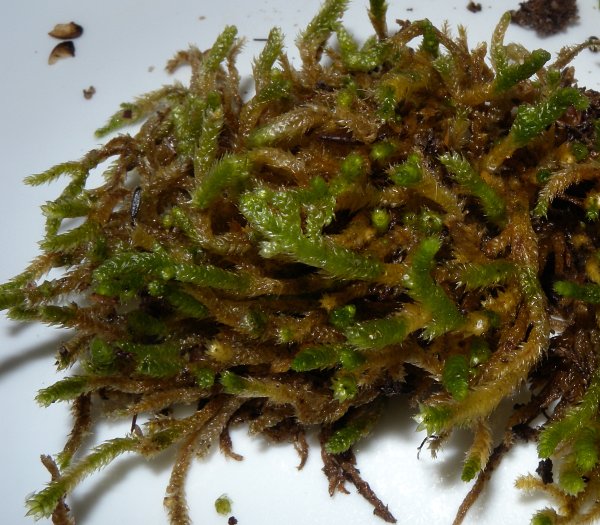
The leaves of secondary stems (branches) taper more abruptly at their tips than those of primary stems, otherwise they are very similar in appearance. The midribs of the leaves are slender, a slightly darker shade of green, and relatively inconspicuous; they extend outward to about 67-80% of the leaf length, falling short of the leaf tips. Across most of the leaf surface, individual leaf cells are narrowly oblong-angular in shape and flat. This moss is dioicous, forming inconspicuous male sexual organs and female sexual organs on separate plants (gametophytes). As a result, spore-bearing capsules on slender setae (stalks) are uncommonly produced. When they occur, the setae of these capsules are 12-25 mm. (½–1") long, reddish at maturity, and more or less erect. Mature capsule bodies are about 1.5 mm. long, short-cylindrical in shape with a tapering base, and slightly curved. The lids (operacula) of the capsule bodies are about 1.0 mm. in length and long-beaked. Both the capsules bodies and lids are reddish to reddish brown at maturity.
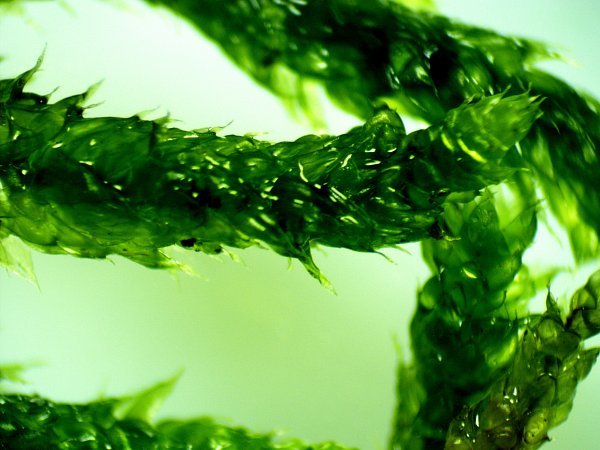
Hairless and membranous hoods (calyptrae) initially cover the capsule bodies and lids, but they soon split apart and fall to the ground. After the lids of the capsule bodies fall off, a ring of narrowly triangular outer teeth and inner teeth is revealed, and the spores are dispersed by the wind. Individual spores are 13-17 micrometers across and nearly smooth. At the base of leafy stems, or wherever they establish contact with moist ground, there are fibrous rhizoids that anchor them to the substrate. This moss does not reproduce asexually, except by the fragmentation of leafy stems as a result of disturbance. Fragments of leafy stems are also capable of developing fibrous rhizoids when they establish contact with moist ground.
Cultivation: The preference is partial sun to medium shade, moist conditions, and a substrate consisting of ordinary soil, humus, rotting bark, or rocky ground with a thin layer of soil over it. At favorable sites, this moss can be long-lived.
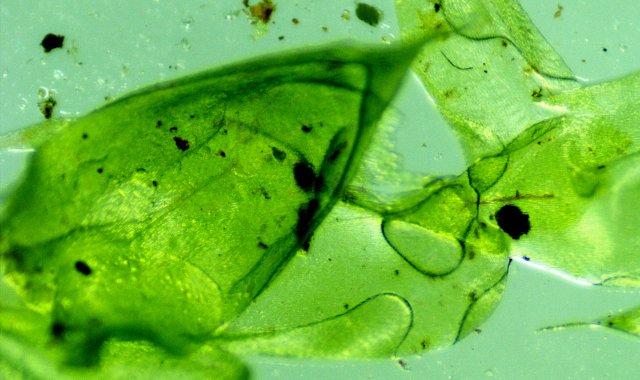
Range & Habitat: The native Spoon-leaved Moss (Bryoandersonia illecebra) is occasional in east-central and southern Illinois, while in the rest of the state it is uncommon or absent (see Distribution Map). Illinois lies along the NW range-limit of this moss; it is widely distributed in eastern United States, while in Canada it occurs in southern Ontario as a rare plant. In Illinois, habitats include rocky soil in woodlands, moist soil in sandy woodlands, wooded slopes, ground soil of wooded ridges and bluff tops, areas adjacent to woodland springs and streams, moist rocky slopes along waterfalls, wet sandstone cliffs and boulders, and shaded creek banks. In neighboring states, this moss has been found in moist tallgrass prairies, overgrown shrubby meadows, earthen banks in woods, lower trunks of trees in wet areas, and shaded lawns. In Illinois, this moss seems to prefer higher quality natural areas that have hilly woodlands.
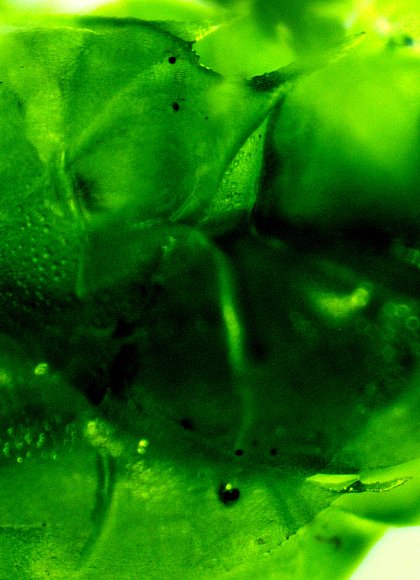
Faunal Associations: When this moss forms sizable cushions of plants, it provides protective cover for many small invertebrate animals. The Four-toed Salamander (Hemidactylium scutatum) takes advantage of such cover to lay and protect its eggs when this moss occurs near streams or other bodies of water (Wood, 1955). Leafy stems of this moss are a minor source of construction material for the nests of the Carolina Chickadee (Poecile carolinensis); see Andreas (2010).
Photographic Location: Indoors using nursery-cultivated plants. Close-up photos were taken with a microscope.
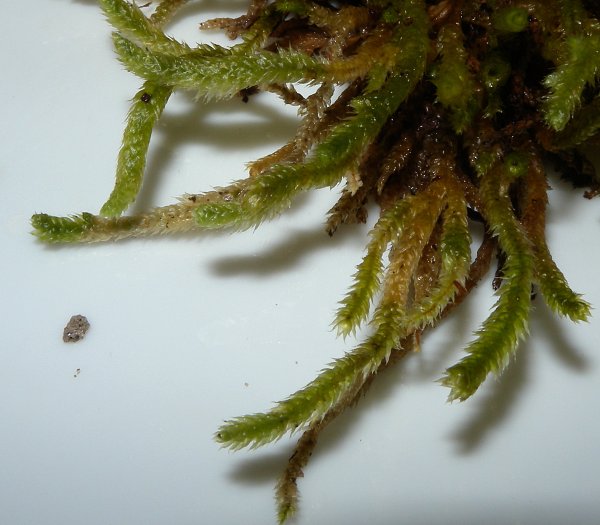
Comments: An older scientific name of this moss is Cirriphyllum boscii. Other common names of this moss include Spoon Moss and Worm Moss. Unlike most mosses in Illinois, it is endemic to eastern North America. At favorable sites, Spoon-leaved Moss (Bryoandersonia illecebra) can form attractive cushions of plants. Sometimes its leafy stems have abrupt transitions of color from light green to brown, whereas in most pleurocarpous mosses such color transitions are more gradual and less conspicuous. Spoon-leaved Moss can be distinguished from the more common Brachythecium spp. (Foxtail Mosses) by the more dense arrangement of its leaves along its stems. As a result, its leafy stems often have a worm-like appearance, especially when they are dry. This moss superficially resembles another moss, Entodon seductrix, but the leaves of this latter species lack solitary midribs and its spore-bearing capsule bodies are straight, rather than slightly curved.